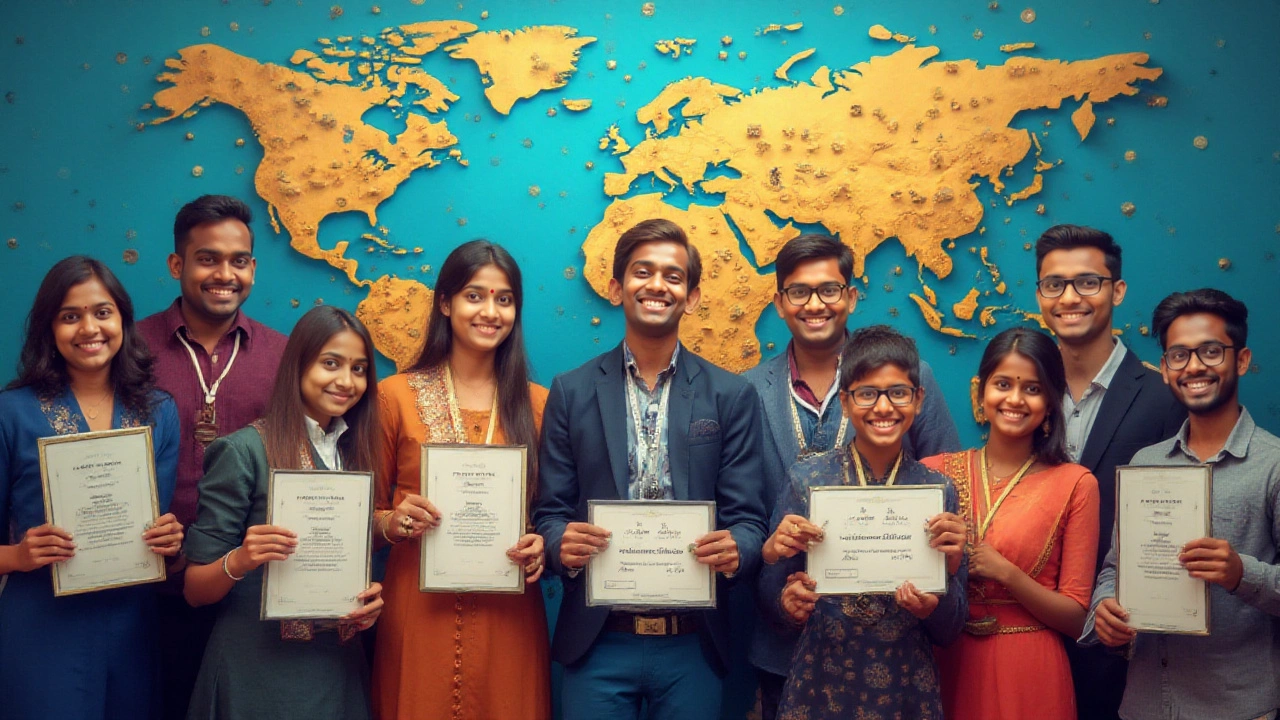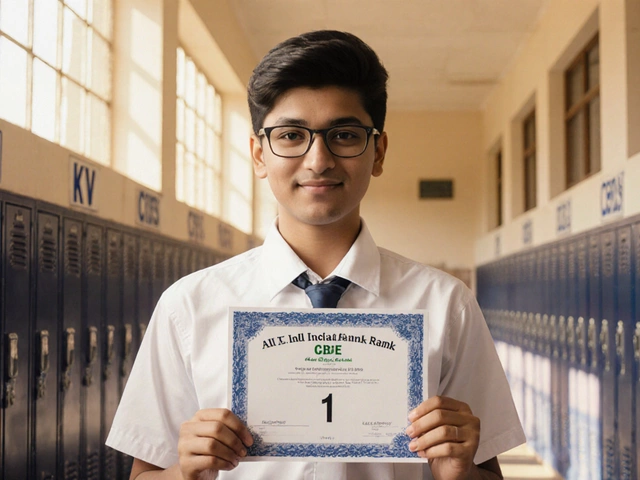Every year, students dream big: Ivy League universities, global exposure, a debt-free education. But those dreams carry price tags that can make even the fiercest overachiever sweat. Here's something surprising: in some countries, competition for top scholarships eclipses the intensity of even their medical or engineering entrance exams. We're not just talking pocket change, either—some scholarships can be worth a small fortune, cover every cent of tuition, and even come with international recognition or an almost-guaranteed job offer. Competitive, life-changing, and often a little mysterious. So what exactly is the highest scholarship exam out there, and how do you become one of the chosen few?
What Makes a Scholarship Exam 'Highest'? Beyond the Money
Let’s be honest—everyone loves free money, but the biggest scholarship exams offer more than fat checks. It’s about prestige, global opportunities, lifelong connections, and sometimes, your entire future trajectory. When students ask about the highest scholarship exam, they usually mean one or more of these:
- Amount awarded (some scholarships are worth over $100,000!)
- Level of difficulty and competitiveness
- International recognition—does it open doors abroad?
- Extras: internship, research opportunities, mentoring, leadership platforms
Why the hype? Because winning these scholarships doesn’t just fund you—it changes your CV and your network forever. For example, Rhodes Scholars become part of a global club whose alumni include heads of state and Nobel Prize winners. The most prestigious scholarships, like the Gates Cambridge or the Schwarzman Scholars program, are famously brutal to win and can set you up for life.
If we zoom in on India, the scene is dominated by a few giants. Exams like the Kishore Vaigyanik Protsahan Yojana (KVPY), National Talent Search Examination (NTSE), and the INSPIRE scholarship are the most coveted among school and early college students. For those who want to study abroad, exams like the SAT (linked to the College Board scholarships), and international awards like the Rhodes and Fulbright, sit right at the top.
Globally, here are some facts worth knowing:
| Name | Max Award Value | No. of Scholarships Per Year | Region |
|---|---|---|---|
| Rhodes Scholarship | $70,000 per year | 100 | Global (to Oxford, UK) |
| Gates Cambridge Scholarship | Full tuition + stipend | 80 | Global (to Cambridge, UK) |
| Schwarzman Scholars | Approx. $45,000 value | 200 | Global (to Tsinghua, China) |
| Fulbright Scholarships | Varies (usually full cost) | 8,000 | Global (mostly USA) |
| KVPY | Rs 80,000 p.a. stipend + Rs 20,000 contingency | 3000 | India |
| Inspire Scholarship | Rs 80,000/year | 10,000 | India |
But before you rush to Google forms and registration portals, keep reading—the strongest scholarships come with fierce competition, unusual tests, and mental hurdles that catch even toppers off-guard.
The Most Prestigious Scholarship Exams in India
If you’re studying in India, two things matter most. First: government-backed scholarships go a long way in state universities and research careers. Second: winning a national-level scholarship makes you a hot pick for future fellowships and even top college placements.
Let’s break down the heavy-hitters. The NTSE is probably India’s most recognized school-level scholarship exam, given to students in Class X. It selects around 2,000 students each year for monetary awards throughout their higher studies. The exam tests analytical reasoning, general aptitude, and subject knowledge—tough, but doable if you start early and like puzzles more than rote learning.
Then comes KVPY, managed by the Department of Science and Technology. Meant for those serious about a research career in science, it provides monthly stipends during basic science undergraduate and postgraduate studies. The exam isn’t just about theory; it’s a test of logic, passion for discovery, and creative problem-solving. Hundreds of thousands try for it yearly, but only about 1 in 1000 applicants get the nod.
INSPIRE is less about a single exam and more about cumulative academic excellence, but its selection is no less ruthless. Scholarships are given to school-leaving students entering Bachelor’s or Master’s programs—but the cutoff marks are usually sky-high, often above 95% in core science subjects. Those who win often find doors open at top Indian Institutes of Science and premier research centers.
Don’t miss out on non-governmental awards, too. Olympiad winners in math, science, or informatics (like the International Maths Olympiad) don’t just get medals—they often win direct scholarships and can walk right into some engineering or science programs. Private tech and finance houses occasionally sponsor big-ticket awards, like the Aditya Birla Scholarships for management students, or the Sitaram Jindal Foundation awards for engineering and medical students.
Preparation for any of these? Start early, join a study group, and drill yourself with past year papers. Most toppers swear by smart resource curation: they don’t just memorize—they focus on mastering foundational concepts. If you love reading and experimenting, you’re already halfway there. And always check eligibility before you commit months to prepping: age, streams, or minimum percentage rules can trip up even the best.

The Global Stage: Legendary International Scholarships and How to Compete
Winning a global scholarship exam brings a sweet extra: suddenly, the world sees you as an academic super-star. Think of the Rhodes Scholarship: open to students worldwide, but famously difficult—just over 100 awarded each year, mostly targeting Oxford-bound grads. The application packs: academic records, recommendation letters, a personal essay, and usually one or more rounds of rigorous interviews. Don't forget leadership roles or evidence of public service. Rhodes trusts want more than just grades—they want proof that you're driven to make a dent in the universe.
The highest scholarship exam in international terms isn’t always the one that pays the most, but the one that transforms your life and prospects. Gates Cambridge and Chevening (UK), Fulbright (US), and the French Eiffel Scholarships all command worldwide buzz. These awards cover full tuition and living costs, and sometimes extras like travel, leadership workshops, and even exclusive alumni networking events. Some, like the DAAD (Germany), are famously friendly to Indian STEM students; others, like the Schwarzman Scholars (China), focus on future global leaders.
Competition? Brutal. For example, Fulbright receives tens of thousands of applications every year and grants about 8000 spots worldwide. Success needs stellar academics, a punchy personal statement, and strong research or project proposals. Some scholarships, especially in STEM, expect published research or demonstrated passion through Olympiads or hackathons.
Here are quick tips that have worked for international scholarship winners:
- Build a portfolio early; include research, extracurriculars, and social work.
- Don’t just list grades and ranks. Explain your vision, future goals, and what YOU want to fix or create.
- Find mentors—teachers or past scholars can help spot blind spots and polish your essays.
- Never use generic templates. Custom-crafted essays and motivation letters make all the difference.
Remember, these scholarships are as much about fit and story as raw marks. Show them how you stand out from the crowd.
Hidden Gems: Lesser-Known, High-Value Scholarships You Shouldn’t Ignore
If you’re fixated only on the fancy names, you might miss high-value scholarships that are easier to win—sometimes with lower competition and friendlier eligibility rules. Think Tata Scholarships for Indian students at Cornell, Singapore Government Scholarships for Southeast Asian studies, and Commonwealth Scholarships for Master’s and Ph.Ds. in the UK. Many of these pay just as well, if not better, than the hyped awards, yet get a fraction of the publicity.
Another pro tip: look for regional or subject-specialized awards. For example, several state governments in India offer lucrative merit scholarships for rank holders in board exams, and these can fund four years of college without ever sitting for a national test. Similarly, specific fields (like Women in STEM, or rural healthcare) are loaded with special scholarships sponsored by corporates or NGOs. These target smaller applicant pools and often prioritize passion over pure academic rank.
Here’s a short-list of valuable, less-competitive scholarships:
- K.C. Mahindra Scholarships for Postgraduate Studies Abroad
- JN Tata Endowment Scholarship
- Tata Innovation Fellowship (for cutting-edge research in life sciences)
- L’Oreal UNESCO For Women in Science fellowships
What’s the catch? Many of these require you to dig deep for information. They don’t always hit the headlines. So if you’re serious about landing scholarships, spend at least a week researching all options—you might stumble on one that fits you perfectly. And remember: write to universities! Sometimes, international students service offices have info on internal awards that aren’t even published on websites.

Winning Strategies and Common Pitfalls for Scholarship Exam Takers
You’ve read about the prizes, but what about the journey? Here’s a reality check. Most scholarship exam failures aren’t due to lack of brains. Instead, it’s missed deadlines, incomplete documents, boring essays, or bombing the interview. Winners get obsessive about details—every date, every scan, every word of the application is double-checked. Make a checklist, and if possible, start the process at least six months before the deadline.
Another trap: only applying to the famous ones. Apply to a mix—one or two of the high-prestige awards, but also several lesser-known or regional ones. This multiplies your odds. Many toppers got their breakthrough not on their first try, but by building up a portfolio of smaller wins that impressed the big panels later.
Time management is everything. Don’t let exam prep for scholarships sabotage your school or college marks. Make a plan with fixed hours for foundation learning, mock tests, and rest breaks. Burnout is real, and scholarship panels can tell if your application reads like someone who’s just chasing awards—not pursuing genuine excellence.
For exam-day nerves, do what Olympic athletes do: visualize yourself acing it, rehearse with friends, and learn to handle curveballs. Some of the toughest exams throw in surprise questions designed to measure creativity, patience, or moral courage. If you walk into the exam expecting anything, you won’t be rattled by a twist.
Last, but not least: after every failure, do a post-mortem. See where you lost points, ask for feedback, and adjust. Many scholarship winners are repeat applicants. Persistence, not perfection, is what finally gets you the big prize.





